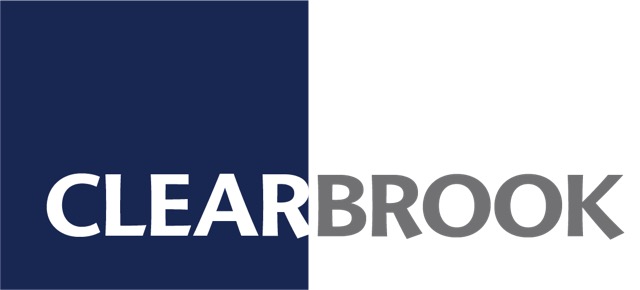Domestic Equity
- On September 1st, new tariffs on more than $110 billion in Chinese imports took effect. The 15% tariffs cover a range of consumer goods and consumer electronics. In retaliation, China has started to impose tariffs on approximately $75 billion of U.S. goods including oil and soybeans.
- As consumer sentiment slid and a tariff deadline in the U.S.– China trade war loomed, U.S. Equities saw their first monthly decline since May 2019. The S&P 500 posted 11 moves of more than 1% in 22 trading sessions for August, which included three declines of at least 2.6%. For the month the Index was down 1.58%, nonetheless, the S&P 500 is up 18.34% through the end of August.
- With exceptionally low interest rates, investors are looking for areas of growth to drive returns. As a result, the Russell 1000 Growth index is up 23.3% for the year, whereas the Russell 1000 Value index is up 13.8%. For August the Growth and Value Indexes dropped by 0.77% and 2.94% respectively.
- For the month, large caps outperformed small caps as there was an expectation that the cut in interest rates would disproportionally benefit bigger companies with potentially larger debt burdens. This dynamic has continued throughout the year as the Russell 2000 is up 11.9%, 6.5% behind the S&P 500. In August the Russell 2000 declined by 4.94%.
- On a valuation basis, the forward P/E ratio for the S&P 500 is 16.6x, just slightly above its 5-year average of 16.5x.
International Equity
- International developed markets also declined in August due to poor economic data and increasing political uncertainties, particularly in Germany. For the month the MSCI EAFE declined -2.59% but is still positive year-to-date at 9.66%.
- German data provided more evidence that trade disputes are pushing the German economy toward recession. Germany’s IFO business climate index fell to its lowest level since 2012.
- The British Pound came under pressure against the U.S. dollar after Prime Minister Boris Johnson suspended parliament from mid-September until October 14th to push through Brexit, with or without a deal. A no deal Brexit is expected to cause a slowdown of trade in Europe as trade agreements would not be in place and could materially impact an already weak European GDP.
- Emerging markets were weak as China’s economic growth slumped to its lowest level in 27 years as the trade war with the U.S. has begun to have a material impact. China’s GDP grew at 6.2% on an annualized rate for the quarter ending June, the slowest quarterly growth rate since 1992, and down from 6.4% the previous quarter.
Fixed Income
- Global trade tensions and volatile economic data drove a persistent rally in Treasuries throughout August, and the spread between the 2- and 10-year Treasury rates inverted.
- The probability of a September rate cut is essentially 100%, and the 30-year Treasury has rallied over 50bps throughout the month, taking out a record low and trading down to 1.90% before closing at 1.96%. The 10-year Treasury ended August with a 53bps decline in yield, the largest one-month rate drop since August 2011.
- The flight to quality pushed investment-grade corporate spreads wider by 12bps to 120bps and high yield corporate spreads widened by 22bps to 393bps.
- Securitized sectors performed relatively well for the month amid the flight to quality. However, MBS underperformed as origination surged following a refinancing frenzy.
Economics
- Time has shown that global recessions have tended to start from the U.S., but the dynamics today are reversed. The decline in business sentiment has been the greatest in Western Europe and Asia with other country-specific drops holding back EM, notably Argentina and Turkey. The U.S. has also seen a decline in business confidence, capex and export growth, but Q2 GDP growth still came in at 2.0%. Supporting the U.S. is a strong U.S. labor market (projected August jobs data is +150,000) and consumer spending. U.S. households have delivered a 4.6% annual rate of growth in spending through July. While there has been a small drop in consumer sentiment, the Index still remains high.
- U.S. Retail Sales rose 0.7% versus the estimated jump of 0.3%, while ex-auto ex-gas was up 0.9%. On the negative side, there was a noticeable weakness in auto sales which fell 0.6% in the month to extend a rocky run for this component. On the plus side, non-stores monthly sales jumped 2.8% following gains of 1.9% and 2.3% in the two prior months. This component is dominated by e-commerce which is making increasingly greater gains at the expense of brick-and-mortar stores.
- In Europe, the economy in the second quarter showed a 0.2% quarterly increase in real GDP, half of the rate achieved in the previous period and equaling the weakest performance since the first quarter of 2013. Annual growth slowed to 1.1%, matching its preliminary flash reading and down a tick from the first quarter.
- In Asia, China’s industrial production rose 4.8% on the year in July, down sharply from 6.3% in June and missed the consensus forecast of 5.7%. This was the weakest growth in industrial production since 2012. The decline in headline growth in July was primarily driven by a similar drop in year-on-year growth in manufacturing output from 6.2% to 4.5%, with weaker growth reported in the output of textiles, chemicals, general equipment, electric machinery, communication equipment and steel products.

